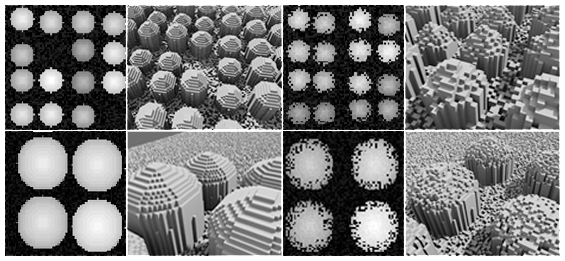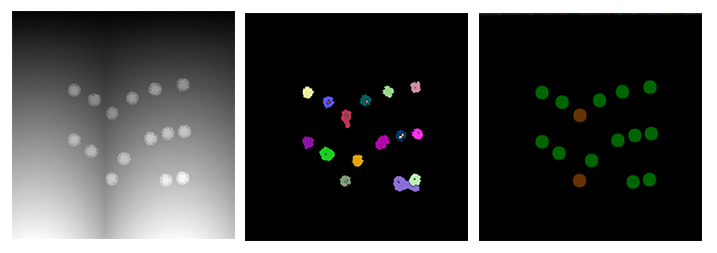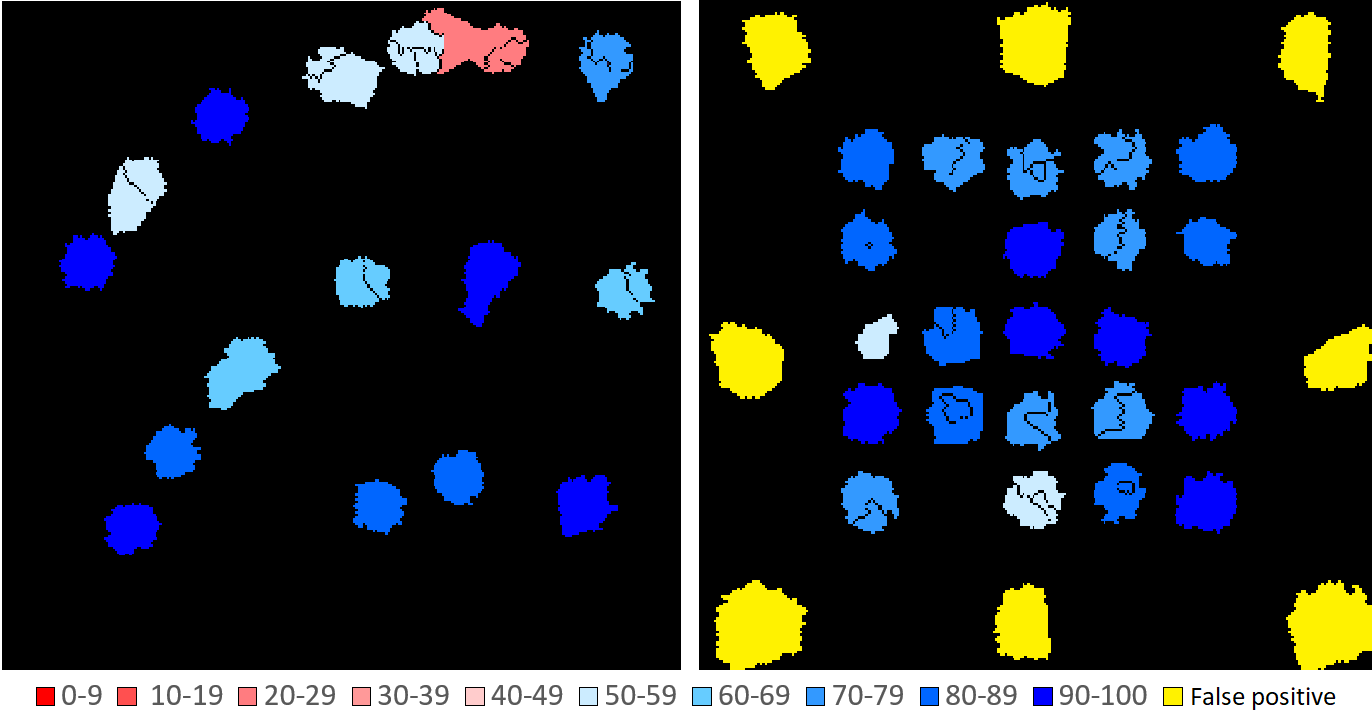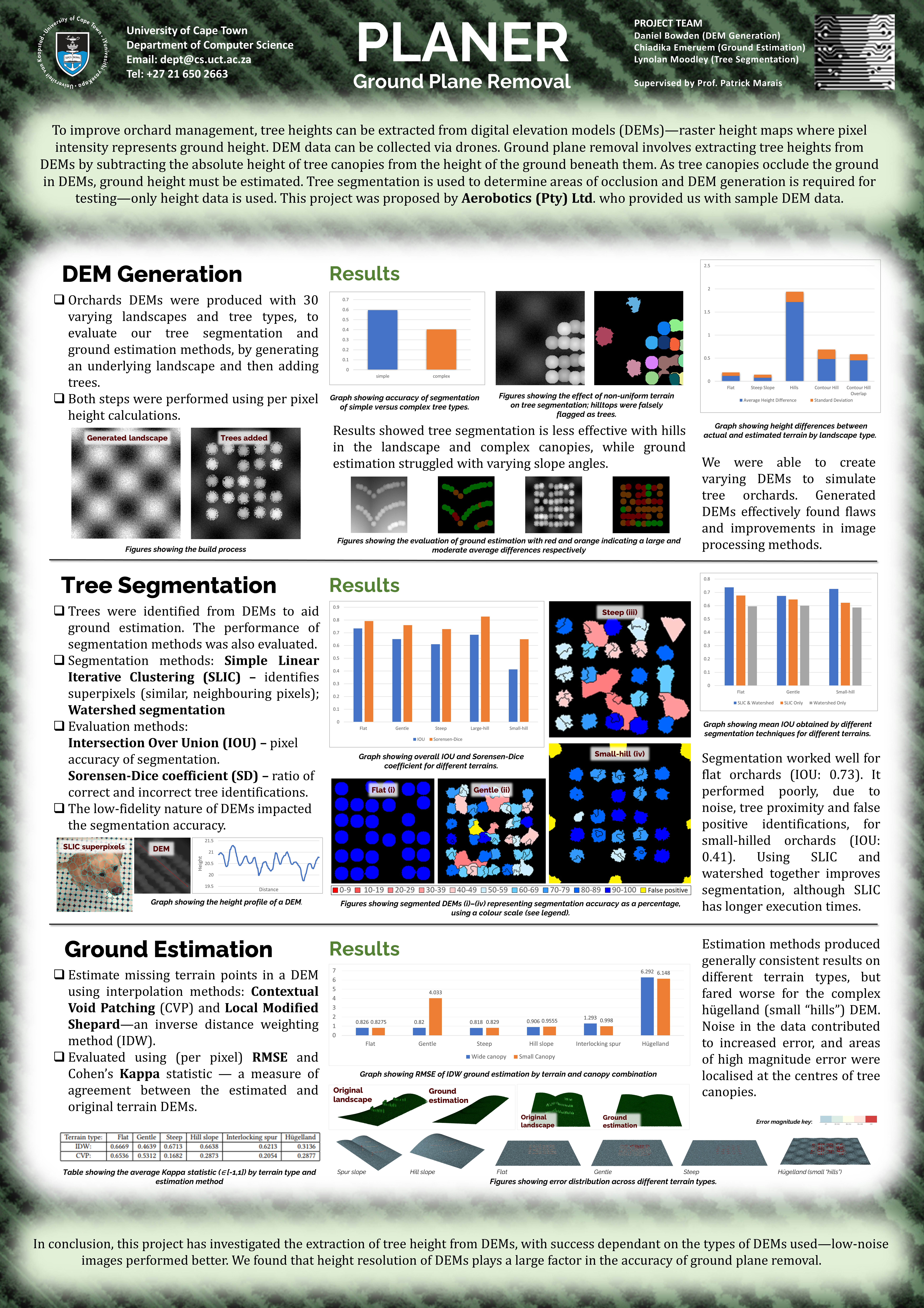Talk to us
No meetings are currently scheduled.
To improve orchard management, tree heights can be extracted from digital elevation models (DEMs)—raster height maps where pixel intensity represents ground height. DEM data can be collected via drones. Ground plane removal involves extracting tree heights from DEMs by subtracting the absolute height of tree canopies from the height of the ground beneath them. As tree canopies occlude the ground in DEMs, ground height must be estimated, through ground estimation. Tree segmentation is used to determine areas of occlusion and DEM generation is required for testing—only height data is used.
This project has investigated the extraction of tree height from DEMs, with success dependant on the types of DEMs used—low-noise images performed better. We found that height resolution of DEMs plays a large factor in the accuracy of ground plane removal.
Images






